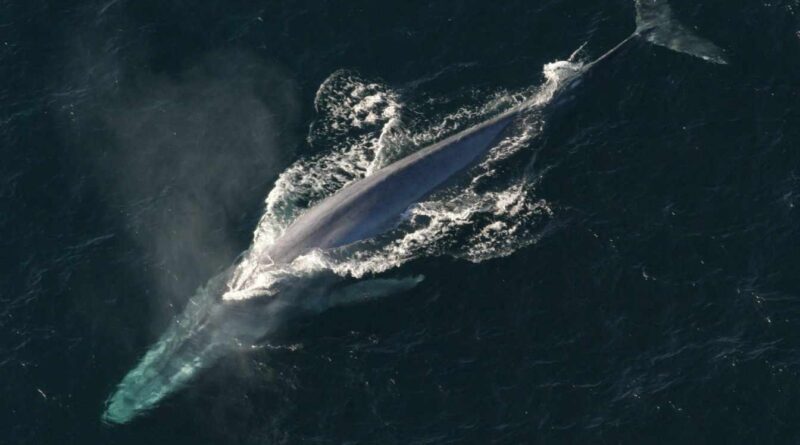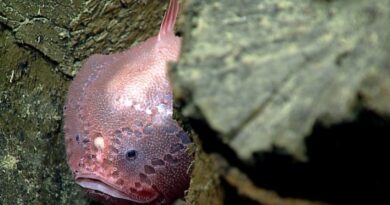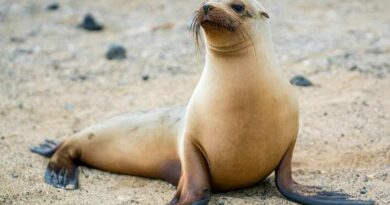Blue Whale
The huge blue whale is the largest mammal that has ever lived on this planet. It dwarfs any of the colossal dinosaurs that formerly roamed the earth many millions of years ago. It’s hard to imagine the size of one until you’ve seen one. It’s easiest to understand by comparing it to a more recognisable animal, such as an elephant. A single blue whale is the equivalent of thirty-three fully grown elephants. The longest whale is 33 metres long, although there are a wide range of sizes, from the massive blue whale to the tiny Pygmy whale, which is only 2.5 metres long. There are around thirty kinds in total, but the humpback whale is the most well-known, as it has allowed human swimmers to closely observe and study its behaviour. So, what’s it like to be this specific ocean colossus?
Surprisingly, it is really gentle and docile. Tales of wild beasts with aggressive dispositions abound from the early days of whaling. Scientists who were the first to try to get particularly close to swimming whales were probably worried that their boats would be crushed, but they soon discovered that they had nothing to fear. Of course, if the early whalers were shooting harpoons into the animals and causing them considerable anguish, some of them would have turned on their tormentors and attacked them. We now know that when left alone, these strong beasts are quiet and shy.
The humpback whale’s brain is five times larger than a human’s, which is the most remarkable statistic about it. It’s unclear why it requires such a massive brain, but it could be related to the sophisticated way in which each whale communicates with its pals and informs them of its changing moods. We can’t tell how whales think from their body language because they only have flippers and fins instead of arms and legs. Our personal moods are represented through the gestures and expressions we make with our incredibly accurate fingers and thumbs. The whale is unable to make facial emotions or gestures. And the noises it makes are so unusual that we have no idea what they mean. It may be incredibly intelligent, but how can it communicate its emotions to us? This issue has yet to be resolved.
The tall spout of water that squirts up from a swimming whale’s nostrils is often the first look humans receive of it. The whale’s nostril is called as a “blow-hole,” and the wet air from its lungs is propelled up out of this hole at an incredible speed of 300 miles per hour every time it breaths. A large whale can quickly empty its lungs and inhale fresh air in this manner. In two seconds, an average-sized whale may take a deep breath that is three thousand times larger than a human breath.
Because whales are warm-blooded mammals and not fish, they must occasionally come to the surface to breathe. Many whales dive for about five to ten minutes, but some of the largest have been known to stay down for nearly an hour and reach enormous depths. Except for humans, no other animal in the world has as much mobility as the majestic whale.
Most animals have too tiny home ranges or are confined in by squabbling neighbours, while huge whales have the entire ocean as their home, and they may go freely anywhere they want—as long as they don’t come across a fatal whaling ship. Because of the unique white markings on their heads and bodies, individual whales are often simple to identify. These marks are caused by small animals that have adhered themselves to the whale’s skin, much like they do on the bottoms of boats. Barnacles that live and breed there indefinitely. The whale appears unable to remove them and will have to live with them for the rest of its life. These marine hitch-hikers could weigh up to 500 kilogrammes, putting a strain on an elderly whale.
Despite its enormous size, the humpback whale eats just microscopic shrimp called as krill. These little animals are nonstop swimmers who gather in enormous swarms near the ocean’s surface. Swarms of shrimp can be almost a mile long and contain millions of them. A large whale will have accumulated several tonnes of krill in its stomach after feeding on them. Inside its mouth is a huge filter that separates the mass of shrimp from the water.
If the feeding whale isn’t feeling very enthusiastic, it can get a decent meal by swimming at the surface of the water with its massive mouth wide open, letting the shrimp drift into its gaping jaws quietly. It may catch them in three different ways at other times. The first is called to as “lung-feeding.” The whale widens its mouth as wide as it can and then dives right into the mass of little creatures floating in the sea in a dense cloud.
The second method is called as “flick-feeding.” When it shifts to this manner, it flicks the krill into its mouth with its massive tail. The third is called as “bubble-netting,” and it’s hard to believe unless you’ve seen it for yourself. The whale swims down beneath the swarm of floating krill and then slowly swims up towards it, circling around and around. As a result, it swims in a spiral, with smaller circles as it approaches the water’s surface. It’s doing this while also blowing out a stream of little bubbles that rise up and form a circular “net,” trapping the krill inside. The whale then spreads its mouth wide and shoots straight up through the middle of the bubble-net with a final, tremendous upward thrust. All of the krill in the trap are simply devoured in a single, enormous slurp. The huge tongue of the whale is utilised to push them down into its throat.
This is how the 40-tonne whales eat for seven or eight months of the year. They have been known to feed for as long as eighteen hours at a time. This is done in the cooler northern waters, where krill is abundant. Then, in the winter, they migrate south, swimming hundreds of miles in spectacular fashion until they reach their breeding habitats. Every year, a group of roughly 400 of them migrates to the Pacific Ocean, where they eventually arrive on the tropical islands of Hawaii. They gather there in November and stay in the warmer waters until March of the following year. The adult whales do not feed at any point during this time.
They spend their days bathing, playing, resting, courting, and giving birth during the breeding season. The males sing extraordinarily loud melodies for many hours, and the sounds can be heard hundreds of miles away over the ocean. Deep bombs and rumblings, as well as louder, squeaky screeches, are among the noises they make. They moo and twitter at times and groan at others. The sound of a full-song humpback whale is unlike anything else on the earth. They continuously changing the sounds, much like people do when they make music. A male will occasionally sing nonstop for more than half an hour, as if building a symphony. Each group of whales has its own distinct singing style, which varies somewhat from year to year. The humpback whales’ musical ability is so remarkable that a tape of one of their songs was stored on the spaceship Voyager, which has already passed Jupiter.
It was transmitted from this planet as a special message to anyone in space who might be able to hear and appreciate it. Because this amazing whale song is seldom heard throughout the long feeding season in northern waters, it’s obvious that it’s a courtship signal, with males announcing their presence to females far and wide. Although they may grunt and whistle throughout the year to communicate, the complete song is only heard when they are breeding. The humpback whale’s courting is a spectacular sight to behold. The enormous animals may be seen leaping from the water in a joyful manner. They can make a lot of noise by pounding the water’s surface with their flippers or tails, or they can show off by rolling their massive bodies from side to side.
They pause from time to time to rub each other’s bodies, and they slap their partners affectionately every now and then. These slaps are nothing more than loving caresses between the courting animals, which can be heard from miles away over the water. The infant humpback whale is roughly 5 metres long from head to tail when it is born, which is ten times the length of a human baby.
It is nourished for over a year by its mother, until it reaches a length of 8 metres. She is a caring mother who has been seen wrapping her long flipper around her baby’s small body to protect it from harm. When the breeding season is finished, the whales head north for another long summer shrimp feast, travelling at around five miles per hour and carrying their new babies. Females who are pregnant are the first to die, followed by young adults and males. The moms and their babies are the last to depart, remaining just a bit longer in the welcoming warmth of the tropical waters before venturing into the freezing cold of the feeding grounds. There were once 100,000 humpback whales in the world’s oceans, but they were harpooned and massacred so indiscriminately that their numbers plummeted until only a few thousand remained. Then, in 1966, a global agreement was reached to put an end to all hunting of these majestic animals. They have been able to live in peace since then, and their numbers have increased modestly.
There are just about 4,000 humpback whales left in the world, according to estimates.
Some of them are so old that they have scars from when harpoons hit them but didn’t kill them during the horrible old whaling days. The future of whales is not as secure as it could be since certain countries still want to shoot them, but we now know so much more about these gentle, intelligent giants that most of us have developed a deep regard for them. And it is via this newfound esteem that they have the best chance of surviving. Anyone who tries to slaughter them now would face the wrath of the entire world.



